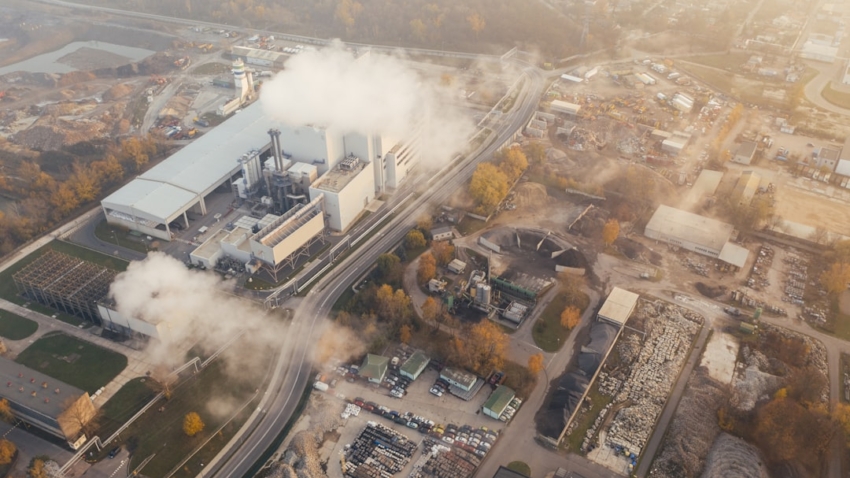
Passing the Smog Test: Keeping Your Vehicle Emissions in Check
The smog test, also known as an emissions test, is a crucial requirement for vehicle owners in many states. The purpose of the smog test is to measure the amount of pollutants emitted by a vehicle and ensure that it meets the environmental standards set by the state. The test is designed to reduce air pollution and improve air quality by identifying vehicles that are emitting excessive pollutants. During the smog test, a certified technician will inspect the vehicle’s emissions control system and measure the levels of pollutants such as carbon monoxide, hydrocarbons, and nitrogen oxides. If the vehicle passes the smog test, it is considered to be in compliance with the state’s emissions standards and can be legally driven on the road. However, if the vehicle fails the smog test, it must be repaired and retested in order to meet the required standards.
The smog test is an important part of maintaining air quality and protecting public health. By reducing the amount of pollutants emitted by vehicles, the smog test helps to minimize the impact of vehicle emissions on the environment and human health. It also plays a key role in ensuring that vehicles are operating efficiently and not contributing to air pollution. Understanding the smog test and its purpose is essential for vehicle owners to comply with state regulations and contribute to a cleaner and healthier environment.
Key Takeaways
- The smog test is a mandatory inspection to measure the emissions of a vehicle and ensure it meets the environmental standards.
- Before taking your vehicle for a smog test, make sure to check the engine oil, coolant, and tire pressure, and address any warning lights on the dashboard.
- Common causes of smog test failures include a malfunctioning oxygen sensor, dirty air filter, or a faulty catalytic converter.
- Regular maintenance of your vehicle, including oil changes, air filter replacements, and spark plug checks, is crucial for controlling emissions and passing the smog test.
- If your vehicle fails the smog test, consider alternative solutions such as using fuel additives, getting a tune-up, or seeking professional help to diagnose and fix the issue.
Tips for Preparing Your Vehicle for the Smog Test
Preparing your vehicle for the smog test is essential to ensure that it passes and meets the required emissions standards. Here are some tips to help you prepare your vehicle for the smog test:
1. Check Engine Light: If your vehicle’s check engine light is on, it will automatically fail the smog test. Before taking your vehicle in for the test, make sure to address any issues that may be causing the check engine light to illuminate.
2. Maintenance: Regular maintenance is key to ensuring that your vehicle passes the smog test. Make sure to keep up with routine maintenance such as oil changes, air filter replacements, and spark plug inspections to keep your vehicle running efficiently.
3. Drive Cycle: Before taking your vehicle in for the smog test, make sure to complete a drive cycle to ensure that all of the vehicle’s systems have had a chance to run diagnostic tests. This will help to ensure that your vehicle is ready for the smog test.
4. Fuel: Make sure to fill up your vehicle with high-quality fuel before taking it in for the smog test. Using a higher quality fuel can help to reduce emissions and improve your chances of passing the test.
By following these tips and properly preparing your vehicle for the smog test, you can increase your chances of passing and ensure that your vehicle meets the required emissions standards.
Common Causes of Smog Test Failures
There are several common causes of smog test failures that vehicle owners should be aware of. Some of the most common reasons for failing the smog test include:
1. Malfunctioning Oxygen Sensor: The oxygen sensor is responsible for measuring the amount of oxygen in the exhaust gases. If the oxygen sensor is malfunctioning, it can cause the vehicle to emit excessive pollutants and fail the smog test.
2. Ignition System Issues: Problems with the ignition system, such as faulty spark plugs or ignition coils, can cause the vehicle to emit excessive hydrocarbons and fail the smog test.
3. EGR Valve Malfunction: The EGR (exhaust gas recirculation) valve helps to reduce nitrogen oxide emissions by recirculating exhaust gases back into the combustion chamber. If the EGR valve is malfunctioning, it can cause the vehicle to emit excessive nitrogen oxides and fail the smog test.
4. Evaporative Emissions System Issues: Problems with the evaporative emissions system, such as a faulty gas cap or leaky hoses, can cause the vehicle to emit excessive hydrocarbons and fail the smog test.
By addressing these common causes of smog test failures and ensuring that your vehicle is properly maintained, you can increase your chances of passing the smog test and meeting the required emissions standards.
Importance of Regular Maintenance for Emission Control
| Benefits of Regular Maintenance for Emission Control | Explanation |
|---|---|
| 1. Reduced Emissions | Regular maintenance helps to keep the emission control system functioning properly, reducing harmful emissions into the environment. |
| 2. Improved Fuel Efficiency | Proper maintenance can improve fuel efficiency, reducing the amount of fuel burned and the associated emissions. |
| 3. Extended Vehicle Lifespan | Regular maintenance can help to extend the lifespan of the vehicle and its emission control system, reducing the need for premature replacement. |
| 4. Compliance with Regulations | Regular maintenance ensures that the vehicle meets emission control regulations, avoiding potential fines and penalties. |
Regular maintenance is crucial for emission control and ensuring that your vehicle meets the required emissions standards. By keeping up with routine maintenance, you can help to reduce the amount of pollutants emitted by your vehicle and contribute to a cleaner and healthier environment. Some key maintenance tasks that can help to control emissions include:
1. Air Filter Replacement: Regularly replacing your vehicle’s air filter can help to ensure that it is able to effectively filter out pollutants and reduce emissions.
2. Spark Plug Inspection: Inspecting and replacing spark plugs as needed can help to ensure that your vehicle’s engine is running efficiently and emitting fewer pollutants.
3. Oil Changes: Regular oil changes can help to keep your vehicle’s engine running smoothly and reduce emissions.
4. Emissions System Inspections: Regular inspections of your vehicle’s emissions control system can help to identify and address any issues that may be causing excessive emissions.
By staying on top of these maintenance tasks and addressing any issues that may arise, you can help to control emissions and ensure that your vehicle meets the required emissions standards.
Alternative Solutions for Passing the Smog Test
If your vehicle fails the smog test, there are several alternative solutions that you can consider to help it pass:
1. Repairs: If your vehicle fails the smog test due to a specific issue, such as a malfunctioning oxygen sensor or faulty ignition system, you may need to have it repaired in order to pass the test.
2. Tune-Up: A tune-up can help to address any issues with your vehicle’s engine and emissions control system, improving its chances of passing the smog test.
3. Fuel Additives: Using fuel additives designed to reduce emissions can help to lower pollutant levels and improve your chances of passing the smog test.
4. Retest: After addressing any issues that caused your vehicle to fail the smog test, you can have it retested to ensure that it now meets the required emissions standards.
By considering these alternative solutions and taking steps to address any issues that caused your vehicle to fail the smog test, you can increase your chances of passing and ensure that your vehicle meets the required emissions standards.
Environmental Impact of Vehicle Emissions

Vehicle emissions have a significant impact on the environment and public health. The pollutants emitted by vehicles, such as carbon monoxide, hydrocarbons, nitrogen oxides, and particulate matter, contribute to air pollution and have a range of negative effects on the environment and human health. Some of the environmental impacts of vehicle emissions include:
1. Air Quality: Vehicle emissions contribute to poor air quality, which can lead to a range of health issues such as respiratory problems, heart disease, and lung cancer.
2. Climate Change: The greenhouse gases emitted by vehicles, such as carbon dioxide, contribute to climate change by trapping heat in the atmosphere and leading to global warming.
3. Acid Rain: Nitrogen oxides emitted by vehicles can contribute to acid rain, which has harmful effects on ecosystems, water quality, and infrastructure.
4. Ozone Depletion: Some pollutants emitted by vehicles can contribute to ozone depletion, which has negative effects on human health and ecosystems.
By understanding the environmental impact of vehicle emissions, we can recognize the importance of reducing emissions and taking steps to minimize our impact on the environment.
Resources for Finding Certified Smog Test Centers
Finding a certified smog test center is essential for ensuring that your vehicle receives a proper inspection and meets the required emissions standards. There are several resources available to help you find certified smog test centers in your area:
1. State Websites: Many states have websites that provide information on certified smog test centers, including locations, hours of operation, and contact information.
2. Online Directories: There are online directories that allow you to search for certified smog test centers by location, making it easy to find a center near you.
3. Referrals: Asking friends, family members, or colleagues for referrals can be a helpful way to find certified smog test centers that have provided reliable service.
4. Automotive Service Providers: Many automotive service providers offer smog testing services at their facilities, making it convenient to have your vehicle tested while also receiving other maintenance or repair services.
By utilizing these resources and finding a certified smog test center for your vehicle, you can ensure that it receives a proper inspection and meets the required emissions standards set by your state.
If you’re interested in learning more about the importance of smog testing and its impact on air quality, check out this article on tigerping.com. This article provides valuable information on the benefits of smog testing and how it can help reduce harmful emissions in the environment. It also discusses the regulations and requirements for smog testing in different regions, making it a useful resource for anyone looking to understand the significance of this important environmental measure.
FAQs
What is a smog test?
A smog test, also known as an emissions test, is a procedure to measure the amount of pollutants emitted by a vehicle. It is typically required by law in areas with high levels of air pollution to ensure that vehicles are not emitting excessive pollutants into the atmosphere.
Why is a smog test required?
Smog tests are required to help reduce air pollution and improve air quality in areas with high levels of pollution. By ensuring that vehicles meet emissions standards, smog tests help to minimize the harmful effects of vehicle emissions on the environment and public health.
What is involved in a smog test?
During a smog test, a vehicle’s emissions are measured using specialized equipment. This may include testing the vehicle’s exhaust emissions, checking the functionality of the vehicle’s emissions control systems, and inspecting the vehicle’s onboard diagnostic system for any potential issues.
How often is a smog test required?
The frequency of smog testing varies by location and is typically determined by local regulations. In some areas, vehicles are required to undergo smog testing annually, while in others, testing may be required every two years or only for certain types of vehicles.
What happens if a vehicle fails a smog test?
If a vehicle fails a smog test, the owner is typically required to have the necessary repairs made to bring the vehicle into compliance with emissions standards. Once the repairs are completed, the vehicle can be retested to ensure that it meets the required emissions standards.












Leave a Reply
You must be logged in to post a comment.